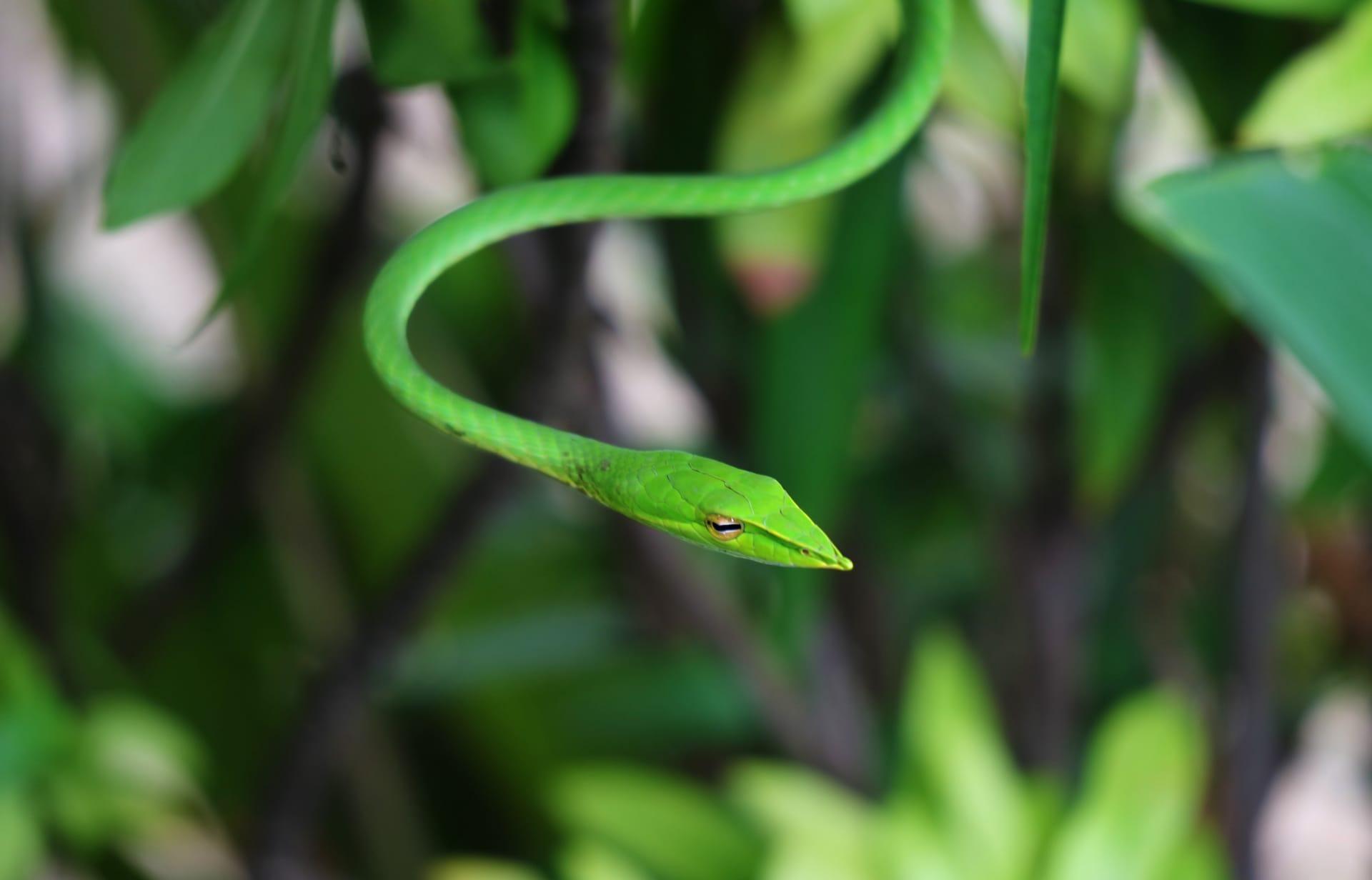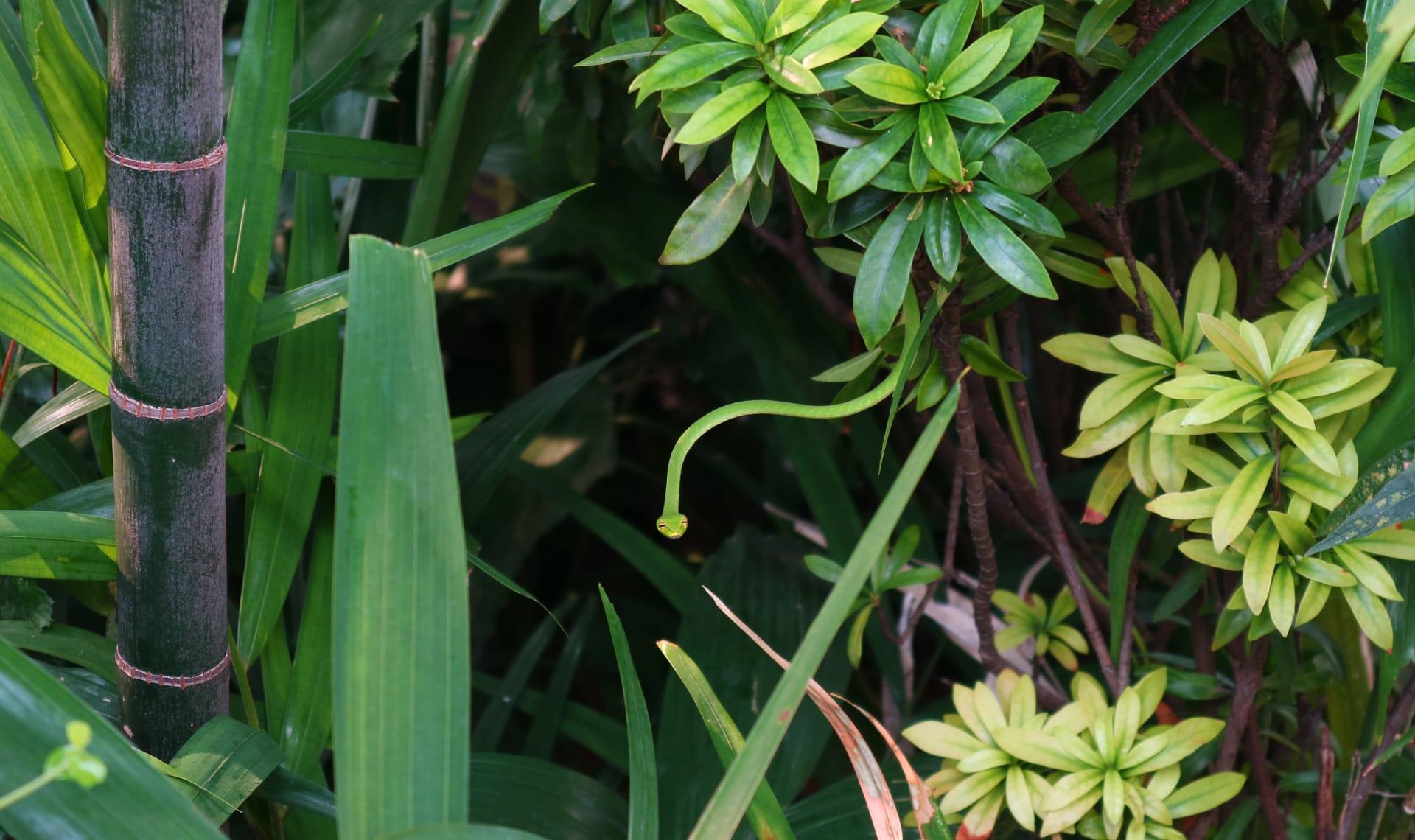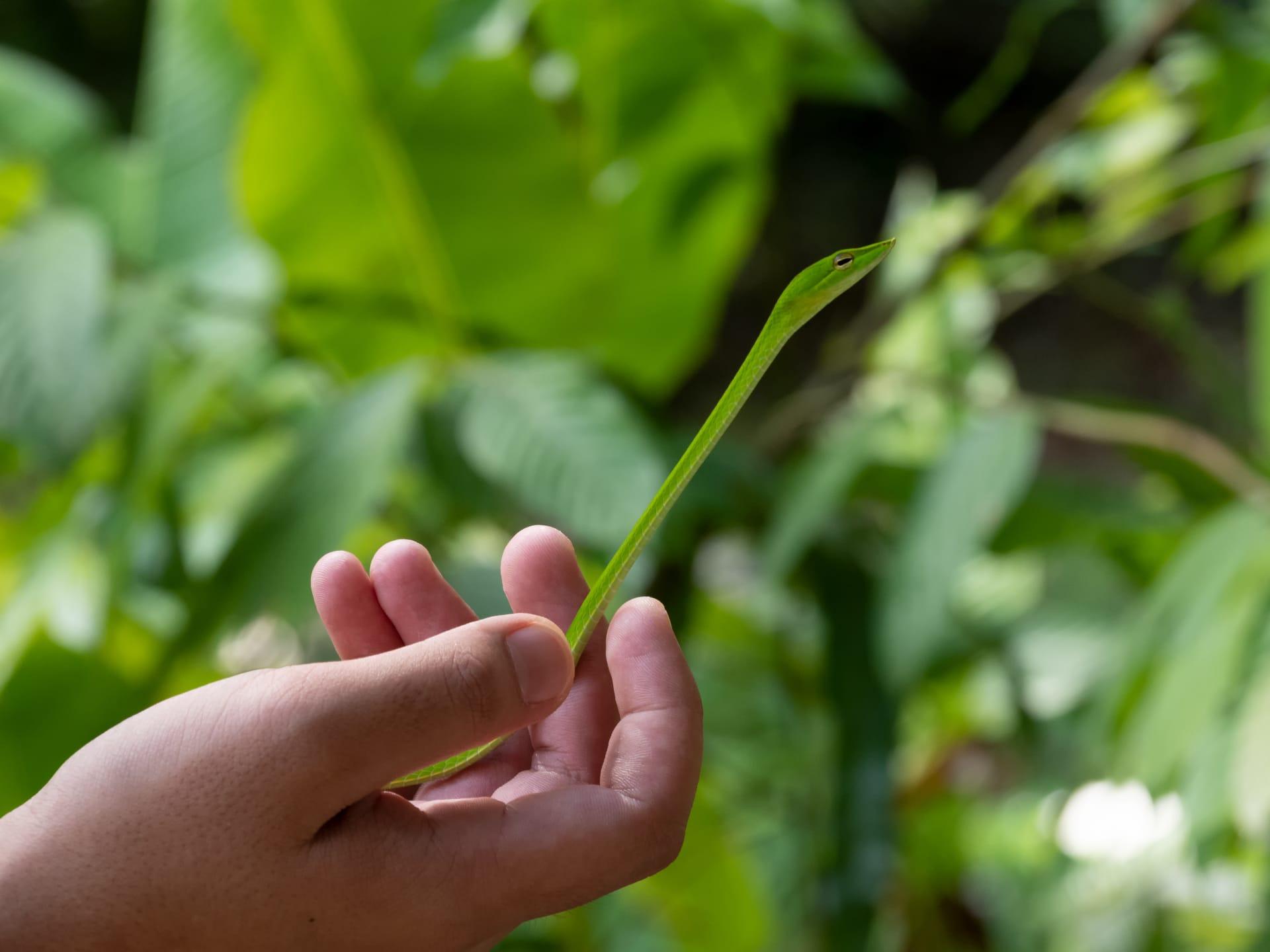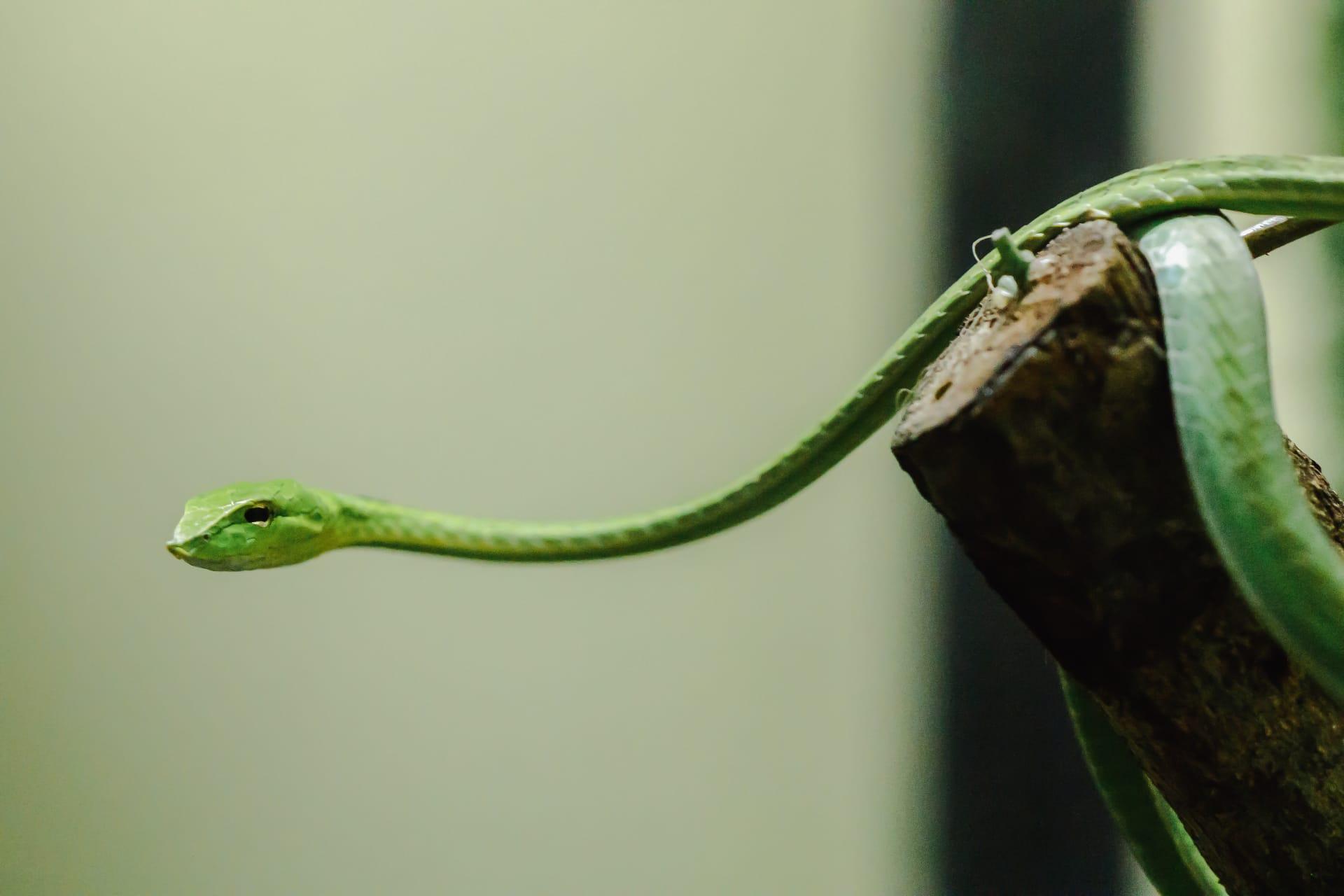Oriental Whip Snake
- Home /
- Mini Encyclopedia /
- Animal /
- Oriental Whip Snake
1
The Oriental Whip Snake, scientifically known as Ahaetulla prasina, is a fascinating species belonging to the family Colubridae, which includes some of the most common and widespread snakes. This species is characterized by its slender body, elongated head, and bright, often striking colors. Their unique physical attributes have not only made them a subject of interest among herpetologists but also a visually captivating species for snake enthusiasts.
Oriental Whip Snakes are predominantly found in Southeast Asia, encompassing a range that includes Thailand, Indonesia, Vietnam, and Malaysia. Their habitat is primarily in the dense forests and jungles of these regions, where they thrive in the humid and warm climate. They are arboreal, meaning they spend a majority of their life in the trees, skillfully navigating the canopy to hunt and evade predators. Their presence in these ecosystems highlights the rich biodiversity of Southeast Asia and the importance of forest conservation in these areas.

2
Question: Is the Oriental Whip Snake venomous and dangerous to humans?
Answer: A common misconception about the Oriental Whip Snake is that it's highly venomous and poses a significant threat to humans. In reality, while they are mildly venomous, their venom is not particularly harmful to humans. These snakes use their venom primarily to subdue small prey, such as birds and lizards. Bites to humans are extremely rare and usually result from defensive behavior rather than aggression. If bitten, the effects are generally mild, including slight pain and swelling. This clarification is important as it helps reduce the unwarranted fear and misunderstanding surrounding this snake species.

3
The Oriental Whip Snake has adapted several intriguing survival strategies to thrive in its environment. One key strategy is their remarkable camouflage. Their green coloration blends seamlessly with the foliage, making them almost invisible in their natural habitat. This not only aids in hunting by allowing them to ambush prey, but also protects them from predators.
Another survival tactic is their diet versatility. They primarily feed on small vertebrates like frogs, lizards, and occasionally small birds. This adaptability in diet ensures their survival even when certain food sources are scarce. Additionally, their arboreal lifestyle helps them escape ground-based threats and gives them access to a broader range of prey in the treetops.

4
In the ecosystem, the Oriental Whip Snake plays a pivotal role, particularly in controlling the population of their prey species. By feeding on small vertebrates, they help maintain a balance in the food chain, preventing overpopulation of these species. This is crucial for the health of the ecosystem, as an imbalance can lead to detrimental effects on vegetation and other animal species.
Moreover, the Oriental Whip Snake serves as an indicator species. Their health and population in the wild reflect the overall health of their habitat. A decline in their numbers can signal environmental issues such as deforestation or pollution. Thus, they are not only integral to the ecosystem's balance but also to our understanding of environmental health and the need for conservation efforts.

5
Film: One notable documentary featuring the Oriental Whip Snake is "Jungle's Silent Hunters" produced by the National Geographic in 2017. This documentary, shot in the dense forests of Indonesia, provides an in-depth look into the life of arboreal snakes, with a significant focus on the Oriental Whip Snake. It explores their hunting techniques, mating rituals, and survival strategies, offering viewers a captivating glimpse into their elusive world.
Book: "Serpents of Southeast Asia: A Naturalist's Guide", published in the United States in 2019 by Dr. Samuel Miller, delves into the diverse snake species of Southeast Asia, including the Oriental Whip Snake. This book provides detailed descriptions, habitat information, and high-quality photographs, making it a valuable resource for both researchers and wildlife enthusiasts.
Book: Another informative read is "The Arboreal Snakes of Asia", authored by Linda Greene and published in the UK in 2021. This book specifically focuses on tree-dwelling snakes, highlighting the Oriental Whip Snake as a prime example. It discusses their adaptation to arboreal life, ecological significance, and the threats they face due to habitat loss and climate change, emphasizing the need for conservation efforts in their natural habitats.